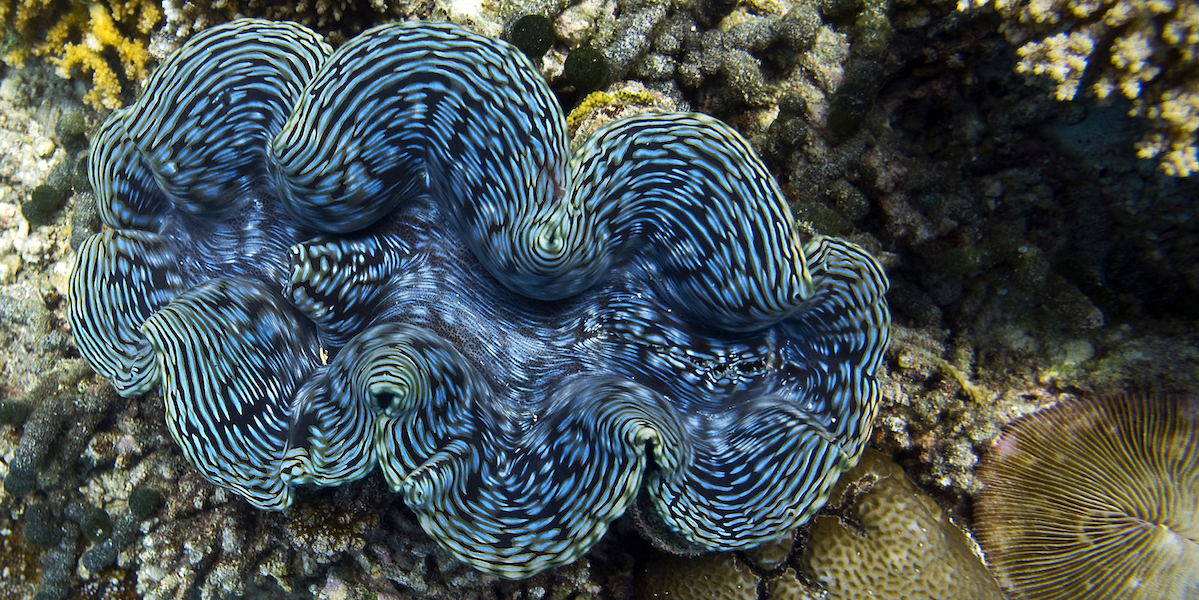Powering the Future with Giant Clams

In 2014, Shu Yang, of Materials Science and Engineering, joined School of Arts and Sciences’ biophysicist Alison Sweeney on an unusual quest. Backed by a NSF INSPIRE grant for bold, interdisciplinary research, the duo aimed to unlock the solar-powered secrets of the giant clam.
These hypnotically colored sea creatures look the way they do because evolution had turned them into highly efficient solar transformers. Structures known as iridocytes scatter and reflect tropical sunlight in a precise way, allowing the clams to grow in-dwelling algae for food without cooking themselves to death.
Sweeney and Yang are combining their knowledge of how these structures align within the clam and how they might be replicated in the lab with an eye toward designing a next-generation bioreactor. Growing algae for fuel has been a long-stranding alternative energy idea, but the effort has not been worth the cost thus far.
Writing in The Atlantic, reporter Cynthia Barnett travelled to Palau and Penn’s campus to observe Sweeney and Yang at work, putting their research in the context of the increasing environmental pressure these clams are under.
In the years since, Sweeney and her colleagues have discovered that the clams’ iridescence is essentially the outer glow of a solar transformer—optimized over millions of years to run on sunlight and algal biofuel. Giant clams reach their cartoonish proportions thanks to an exceptional ability to grow their own photosynthetic algae in vertical farms spread throughout their flesh. Sweeney and other scientists think this evolved expertise may shed light on alternative fuel technologies and other industrial solutions for a warming world.
Continue reading at The Atlantic.
